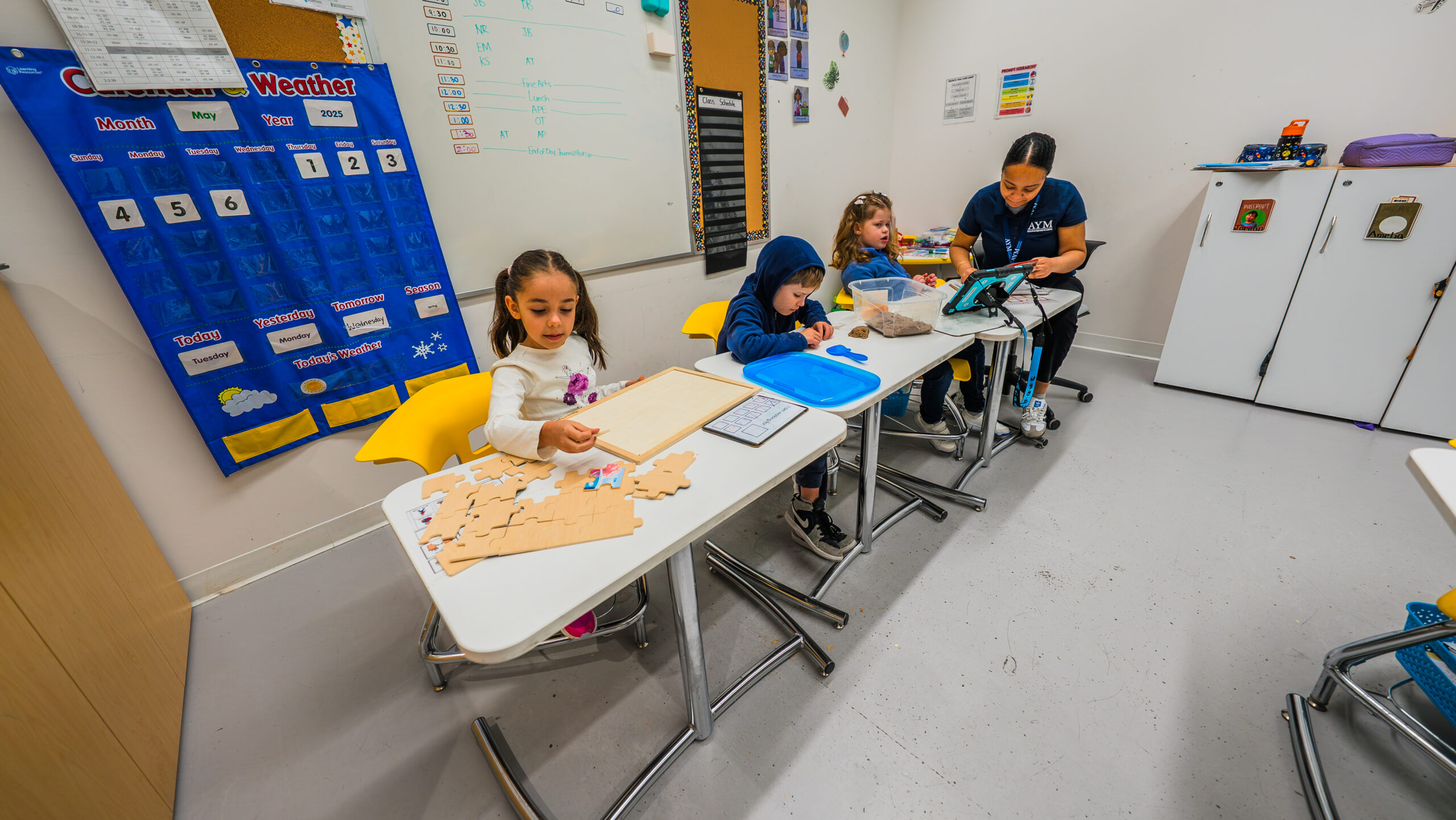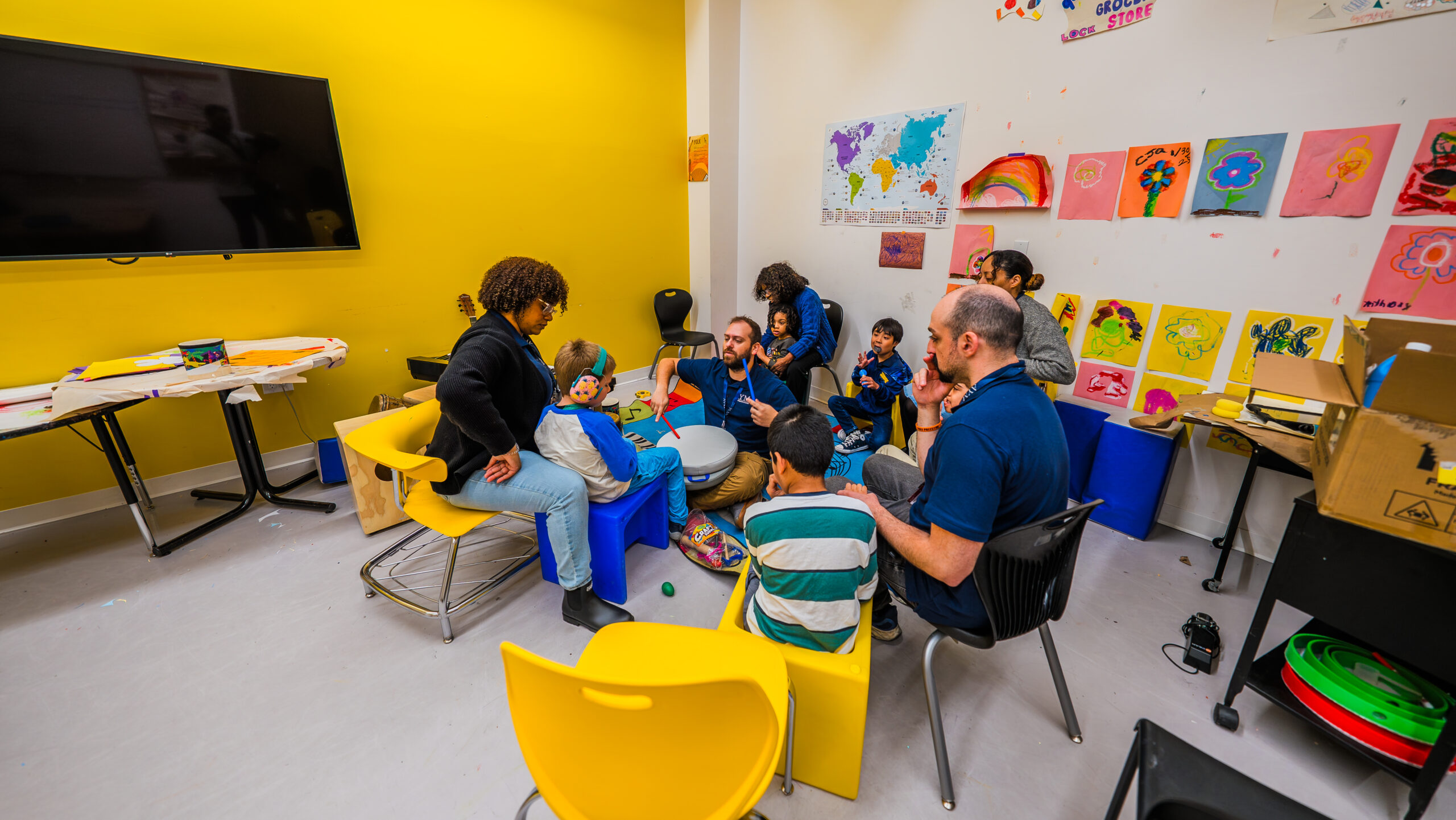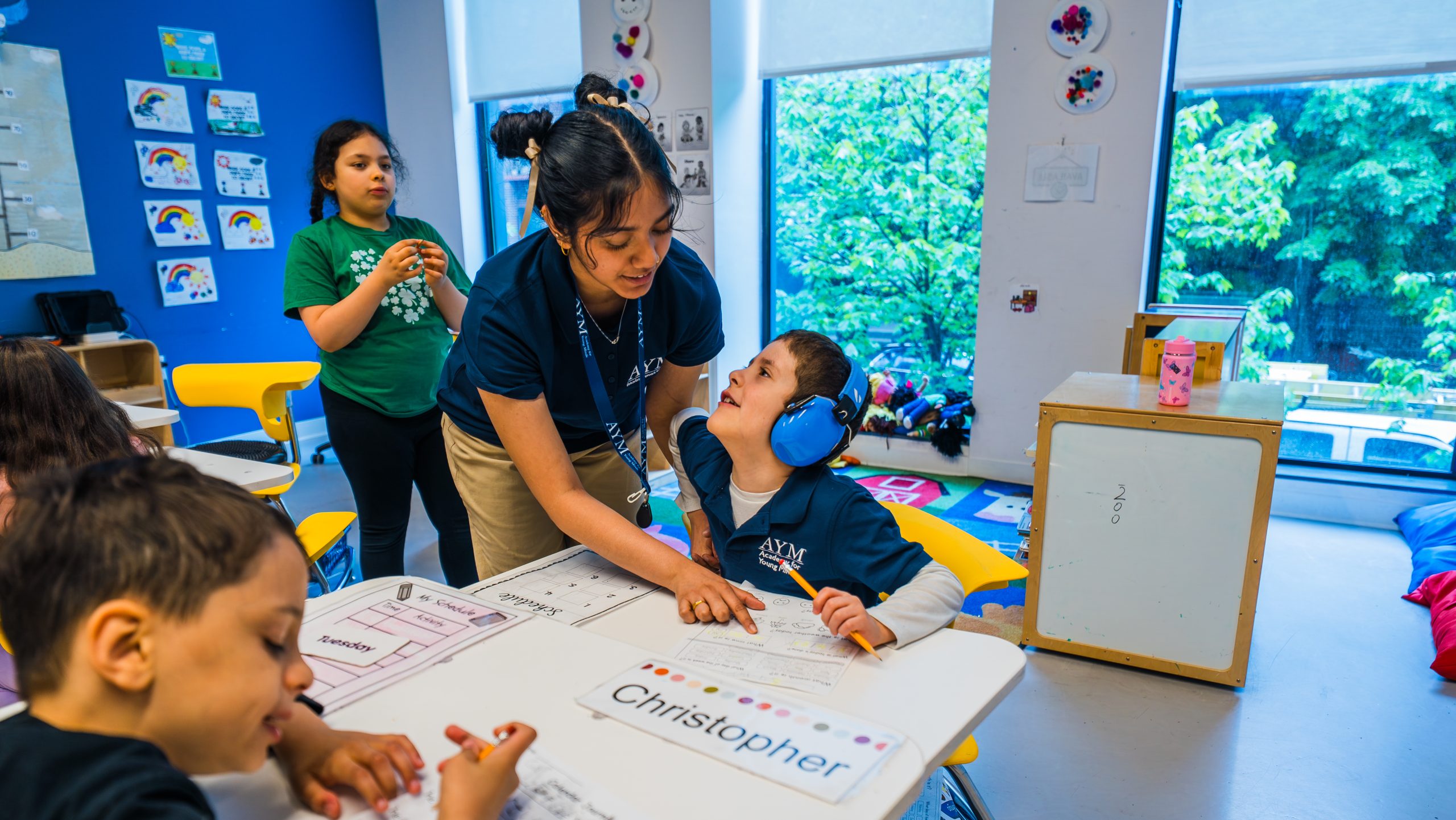The Science Behind Small Class Ratios: Why AYM’s Model Makes a Difference
You walk into a public school classroom and see fifteen students packed together, one teacher trying to manage it all, and your child sitting in the back corner looking completely overwhelmed. Your heart sinks because you know this isn’t working.
Then you visit AYM and see something different: six students, one special education teacher, and two teaching assistants who greet your child by name and seem to genuinely understand how they learn best. For the first time in a long time, you feel hopeful.
This difference isn’t just about having fewer kids in a room. It’s about creating the right environment where your child can actually learn, grow, and thrive.
Why Class Size Really Matters for Your Child
When you’re looking at schools for your child with autism, class size might seem like just a number. But research shows it’s so much more than that.
Recent studies found that when there are more adults available to support students with autism, students are more engaged in learning and need fewer behavioral interventions. When there are fewer adults, students struggle more and teachers spend more time managing behaviors instead of teaching.
For your child with autism, smaller classes mean:
- Less sensory overload from noise and chaos
- More opportunities to communicate and be heard
- Predictable routines that help them feel secure
- Teachers who actually know how they learn best
Of course, not every child needs the same level of support, and what your child needs might change as they grow. At AYM, we don’t just have small classes; we have three different types of classrooms designed for different needs.
AYM’s Three Classroom Types
6:1:2 Classrooms: When Your Child Needs Extra Support
Six students, one special education teacher, and two teaching assistants. This is our most supportive environment, perfect for children who are working on fundamental skills.
Maybe your child is just learning to communicate their needs, or they’re still figuring out how to manage big emotions. With this many adults in the room, there’s always someone available to celebrate their successes and help them through challenging moments.
What does this look like day-to-day? When your child successfully asks for help, there’s an adult right there to acknowledge it immediately. When another student is having a difficult time, there’s support available without taking attention away from your child’s learning.
8:1:2 Classrooms: Building Independence Step by Step
Eight students, one special education teacher, and two teaching assistants. This classroom is for children who have some basic skills and are ready to practice them with a few more peers around.
Your child might thrive here if they can communicate their basic needs and have some strategies for managing emotions. There’s still plenty of individual support, but also more opportunities to learn from other kids and practice social skills.
Students might work together on projects, practice conversations during snack time, or take turns being the “helper” for daily routines, all with the support they need to be successful.
10:1:4 Classrooms: Preparing for What’s Next
Ten students, one special education teacher, and two teaching assistants. This classroom feels more like a typical school environment while still providing the autism-specific support your child needs.
Children here have developed good independence skills and are working toward even greater independence. They might be getting ready to transition to a different school or are working on skills they’ll need for middle school.
Students take on more responsibility, work more independently, and practice skills they’ll need in their next educational setting. This is all while having access to teachers who understand autism and know how to help them succeed.
How ABA Works Better in Small Classes
Everything we do at AYM is based on Applied Behavior Analysis (ABA), the science of understanding how people learn. And ABA works best when teachers can provide consistent, immediate feedback.
Think about it: if your child does something well in a classroom of fifteen students, the teacher may not have the time to address it appropriately. But in our smaller classes, teachers can catch your child being successful and reinforce the behaviors you want to see more of.
We believe students need to truly master skills, not just learn them once, but practice them until they become automatic. This means giving kids lots of opportunities to practice what they’ve learned until they can do it easily and confidently. This kind of individualized attention is only possible when class sizes allow teachers to really focus on each student.
What This Means for Your Family
Small class sizes mean:
Your child is truly known. Teachers understand what makes them laugh, what helps them feel calm, and exactly how they learn best.
Challenges become learning opportunities. When your child has a difficult moment, there’s enough support to help them work through it without disrupting everyone else’s learning.
Skills transfer to real life. The consistent, individualized support helps your child develop skills they can use at home, in the community, and in future settings.
Real progress happens. Students in smaller classes consistently make greater academic and social gains than those in larger settings.
The AYM Difference
Choosing the right school affects your child’s confidence, their social development, and their future possibilities. At AYM, our three classroom options mean we can meet your child exactly where they are while providing a clear path forward.
Our teachers are trained specifically in autism and ABA. Our classrooms are designed with sensory needs in mind. Our curriculum is individualized for each student. But none of this would be possible without class sizes that allow teachers to truly know and support each child.
If you’re ready to see how the right class size can make a difference for your child, we’d love to show you our classrooms and talk about which setting might be the best fit for your family. Because every child deserves an education that helps them shine.
For more information about AYM’s programs or to schedule a visit, reach out here. We’re here to help you find the right educational environment where your child can truly thrive.
Resources:



